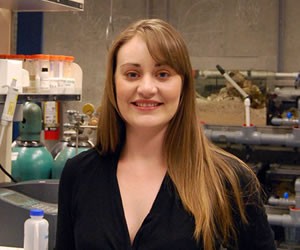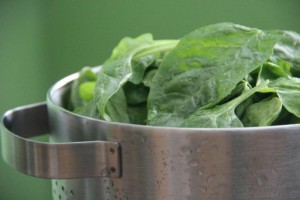22 Aug Spinach Bleach Contours May Prevent Adequate Decontamination
 MedicalResearch.com Interview with:
MedicalResearch.com Interview with:
Nichola Kinsinger, Ph.D
Postdoctoral Researcher, Chemical & Environmental Engineering
University of California, Riverside
USDA National Institute for Food and Agricultural Postdoctoral Fellow
DoD Office of Naval Research National Defense Science and Engineering Graduate Research Fellow, EIT (Chemical Engineering)
Medical Research: What is the background for this study? What are the main findings?
Dr. Kinsinger: Outbreaks observed in produce are becoming increasing common possibly due to contaminated irrigation waters or contaminated waters used during processing. In 2006 California had spinach-borne E. coli outbreak that impacted 26 states and 200 confirmed sickened. Leafy greens account for 20% of the outbreaks alone and are of increased concern since they are frequently consumed raw. These outbreaks drew our attention over the past few years and we started applying methods originally developed for studying bacterial adhesion on engineered surfaces to the issue of food safety. Although food safety is a new area of study for our lab, the project is based upon the concept of pathogen adhesion transport which has been the focus of my advisor’s lab for many years previously. Rather than the previous scenario looking at pathogen interaction with engineered or mineral surfaces, we are looking at a spinach leaf instead.
We are using a parallel plate flow chamber system developed by Professor Sharon Walker to evaluate the real time attachment and detachment of the pathogens to the spinach epicuticle layer (surface layer of the leaf) in realistic water chemistries and flow conditions. Subsequently we can evaluate the efficacy of the rinsing process to kill the bacteria that may remain on the leaf. Initially we were finding that at low concentrations of bleach, bacteria will detach from the leaf surface allowing for potential cross-contamination later in the process. However above 500ppb we observed 100% of the attached bacterial cells are killed.
So how in commercial rinsing operations that use bleach concentration ranging from 50-200ppm result in outbreaks? Through this study we analyzed the topography of the leaf and modeled the concentration gradient across the surface of a leaf based on commercial rinsing practices. We found that even at high bleach concentrations within rinse water result in low bleach concentrations at the leaf surface on the order of 5-1000 ppb bleach, which in our study has shown to that the bacteria can survive when attached to the leaf and/or detach causing concern for cross-contamination. In this case the very disinfection processes intended to clean, remove, and prevent contamination was found to be a potential pathway to amplifying foodborne outbreaks.
Medical Research: What recommendations do you have for future research as a result of this study?
Dr. Kinsinger: The work presented at the conference is part of an ongoing effort in my advisor’s lab. The work will continue to look at a broader range of foods, engineered surfaces, and pathogen types.
Citation:
250th American Chemical Society National Meeting & Exposition discussing:
“Is our salad safe? Efficacy of disinfection techniques to decontaminate spinach leaves and reduce cross-contamination”
MedicalResearch.com is not a forum for the exchange of personal medical information, advice or the promotion of self-destructive behavior (e.g., eating disorders, suicide). While you may freely discuss your troubles, you should not look to the Website for information or advice on such topics. Instead, we recommend that you talk in person with a trusted medical professional.
The information on MedicalResearch.com is provided for educational purposes only, and is in no way intended to diagnose, cure, or treat any medical or other condition. Always seek the advice of your physician or other qualified health and ask your doctor any questions you may have regarding a medical condition. In addition to all other limitations and disclaimers in this agreement, service provider and its third party providers disclaim any liability or loss in connection with the content provided on this website.
[wysija_form id=”5″]
Nichola Kinsinger, Ph.D (2015). Spinach Bleach Contours May Prevent Adequate Decontamination
Last Updated on August 22, 2015 by Marie Benz MD FAAD

